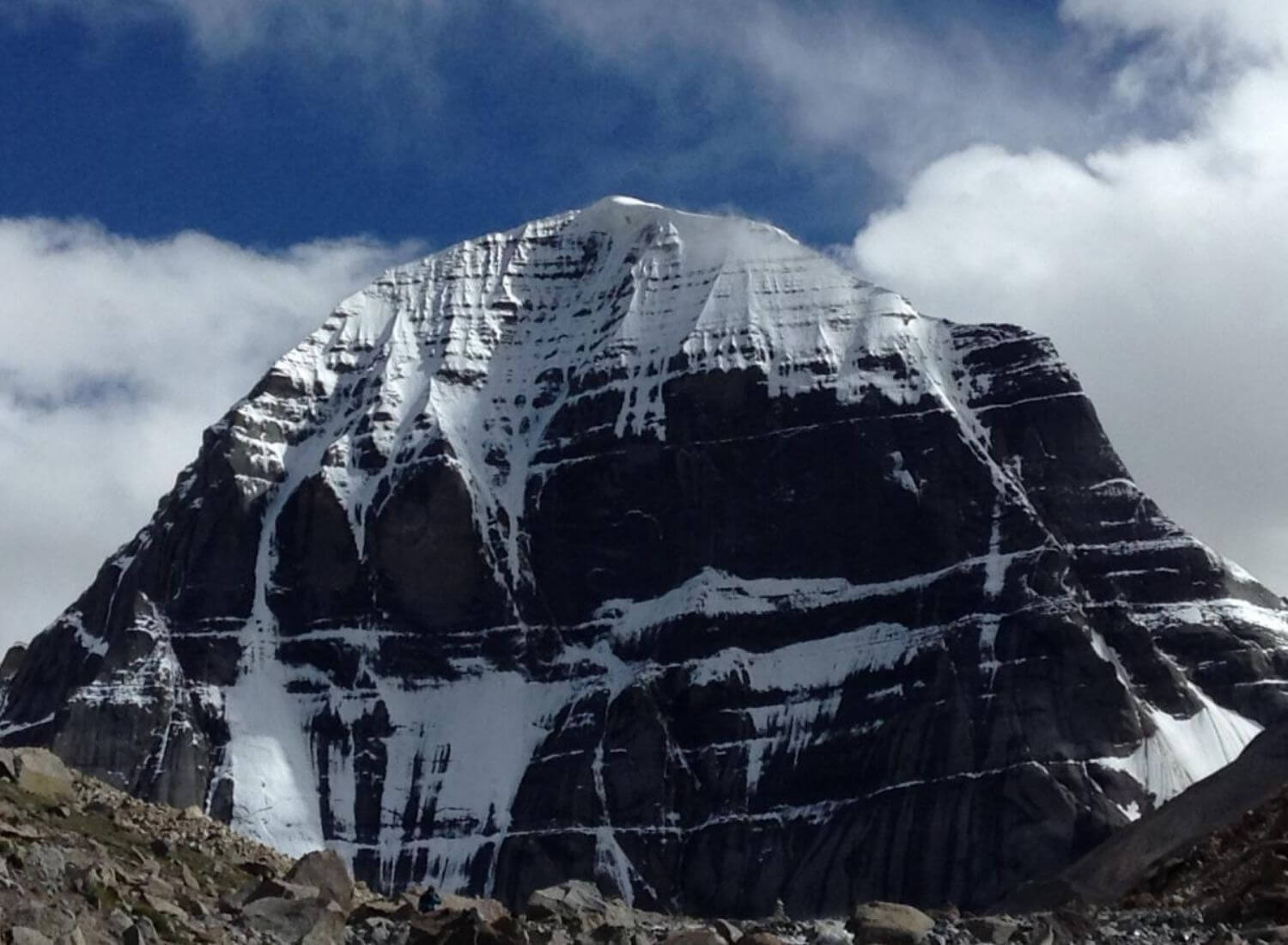Shrouded in lore and mysticism of the unknown, Mount Kailash remains an unexplained phenomenon with several layers adding to its mystery. Located in Western Tibet, Mount Kailash, over the centuries, has garnered interest from several parts of the world and many different disciplines. At a time when humans and technology itch to dominate nature, Mount Kailash remains a riddle that is yet to be scaled to date. The people and alpinists who have dared to try have met with accidents.
The rugged and harsh terrain adds to its daunting surroundings. As a spiritual harbinger of five religions, namely Hinduism, Taoism, Buddhism, Jainism, and the native Tibetan religion of Bőn, Mount Kailash is recognized as a sacred mountain, unreachable and holy. Pilgrims were known to trek around the mountain’s base in a circular path as a sacred ritual, which was later stopped by the Chinese government, keeping in mind the religious sentiments attached.
So, the question one should ask is – what sets this distinctive peak of Mount Kailash apart from others? What is it that makes it such obscurity? What makes Mount Kailash to be known as an abode of the Gods? What does history say about the strange and unique structure of the mountain? There is no one answer, and whatever explanation is provided has borne more questions over its discourse. However, this article aims to assuage the curiosity of the readers about some aspects of this mysterious Mount Kailash.
Mystery Of Mount Kailash’s Geology: Man-made Pyramid?
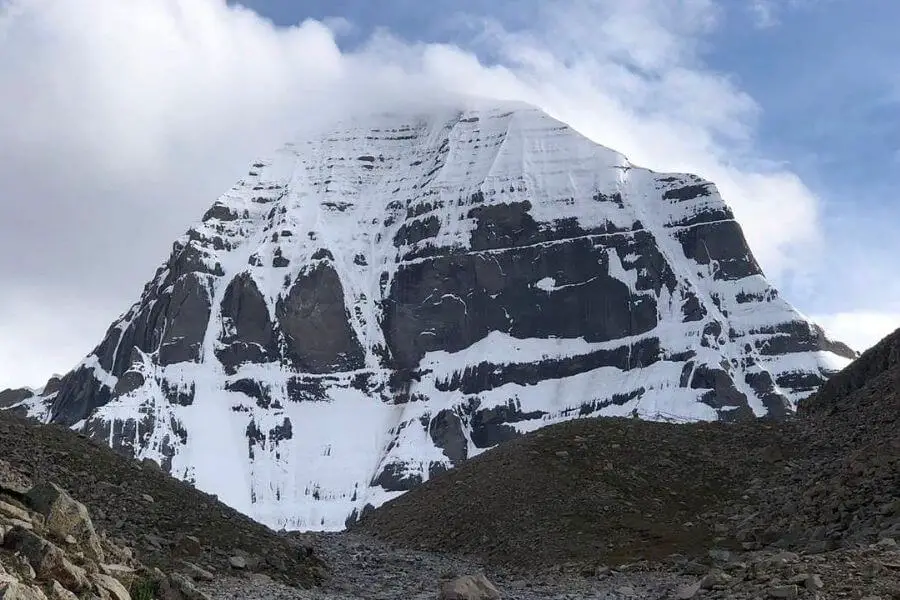
Much to the curiosity of the western world, it has piqued the interest of people due to its distinctive structure, which is cone-shaped from one side and pyramid-shaped from the other side. Theorists itch to give a scientific explanation to the rather strange occurrences that take place near Mount Kailash. Some believe the contours of the mountain are similar to the structures seen in ancient Sumeria and Egypt, especially pyramids.
The Russian Ophthalmologist, Dr. Ernst Muldashev, in 1999, came out with a theory that Mount Kailash is a human-made pyramid. According to him and his team, it was built in ancient times and was surrounded by smaller pyramids, being the apex of supernatural activities. His claims also mention that these pyramids were built by ancient people who were advanced in their technology, which also theorized that Mount Kailash is connected directly to the pyramids of Giza and Teotihuacan. Muldashev has, in detail, mentioned about the strange voices and occurrences that he and his team experienced while near Mount Kailash, like the sounds of stone falling from inside the mountain.
Looking inwards, Mohan Bhatt, a Sanskrit scholar claims that Ramayana also mentions Mount Kailash to be a pyramid, and the ancient texts reveal it to be a “cosmic axis.” Moreover, it is known as ‘Axis Mundi’ or center of the world, according to some Russian and American scientists. It is allegedly connected to other monuments spanning the globe, for example, Stonehenge, which is 6666 km away from the peak of Mount Kailash.
Several theories have emerged regarding the two lakes surrounding the foot of Mount Kailash, namely Mansarovar Tal and Rakshas Tal. The intriguing thing that comes up is that Mansarovar Tal is round-shaped, resembling the sun, whereas Rakshas Tal takes the shape of a crescent moon, depicting the energies of good and evil. Furthermore, despite the proximity of both the lakes, Mansarovar is a fresh-water lake, and Rakshas is a saltwater lake, adding to the mystery of this majestic mountain.
Unconquered Beauty Of Mt. Kailash, But Why So?
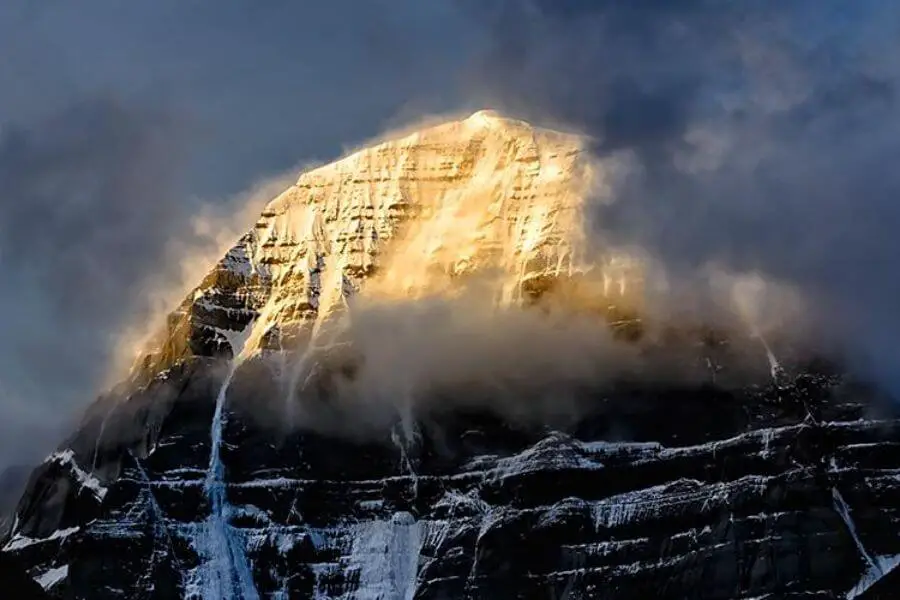
Humans have a penchant for dominating and conquering the elements of nature, hence the development of practices like mountaineering and scaling the peaks. Amidst this hullabaloo, Mount Kailash remains yet to be scaled, and the answer to the why lies in its past.
Legends speak of the people who have tried to scale Mount Kailash and the ill-fate that had befallen on them. The 11th century Tibetan Monk Jetsun Milarepa is the only one famed to have scaled Mount Kailash. This forbidden mountain has weaved a plethora of myths and mysteries around it, making it a spiritually revered location. Nicholas Roerich, a Russian painter, believed in the presence of a mystical kingdom called Shambhala in the vicinity of Mount Kailash. The Hindu counterparts of this myth, according to some sects, refer to Shambala as Kapapa, the residence of the ‘perfect people.’
Experiences shared by Russian alpinists who tried to scale the peak in the 19th and 20th centuries spoke of horrors like accelerated aging while on the mountain, leading to the death of old age within a year of climbing Mount Kailash! Such accounts, however ambiguous and unbelievable, have deterred people from going ahead with their ambitions of conquering this mountain.
The reason for it still being un-scaled also lies in its deep connection to several key eastern religions of Hinduism, Buddhism, etc. Due to its sensitive sentiments, both the governments are wary of letting people scale Mount Kailash and carry on their pilgrimage and for safety purposes too. It is considered a sacred mountain due to it being an abode of the Gods.
Religions place a lot of importance in its gods and their places of worship, which is probably why these houses of worship are situated in places of high altitude like hills and mountains, perhaps defining the concept that to reach your god, you have to go through toil. And also to make these worship places closer to “heaven.”
Mount Kailash is supposed to be inhabited by the Hindu Lord Shiva, who sits there in a meditative trance with his consort Parvati/Shakti/Sati and beloved companion Nandi and Buddha Demchok, who, according to Tibetan Buddhists, represents supreme bliss and resides there. Perhaps this adds to people’s reverence of Mount Kailash, and the thought that since gods live up there, it should be unapproachable and sacred to humans.
An Ancient Nuclear Power Plant: Connection To Mohenjodaro And Mount Meru?
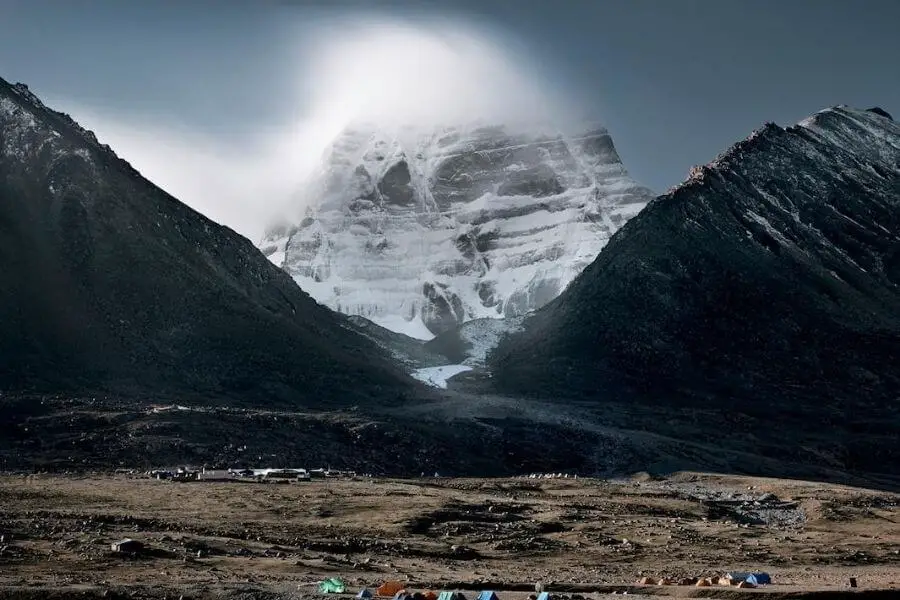
The power of imagination comes in when the unexplained needs an explanation, and such is the case with the Indus Vallery Civilisation. Mohenjodaro, a probable metropolis of IVC, has allegedly recorded radioactive ash and radioactive skeletal remains, which has posed a rather wondrous question, where did the nuclear radiation emanate from?
Ancient history theorists believe that there was nuclear radiation in Mohenjodaro, which caused wide-spread annihilation of the people, perhaps hinting at a radiation event like a nuclear blast or a nuclear meltdown. This theory stems from the need to ascertain a source of such nuclear emanation, which led experts to question the role of Mount Kailash. Philip Coppens theorizes that Mount Kailash, at 22,000 ft., has the potential to be a nuclear power plant.
Mount Kailash’s past has deeper roots in China, with details about the peak mentioned in Magao caves of Western China, which is 600 miles north of Mt. Kailash. These are hill-side dug caves and shrines where Buddhist monks stored scrolls and manuscripts, dating back to 500 BC-1500 AD.
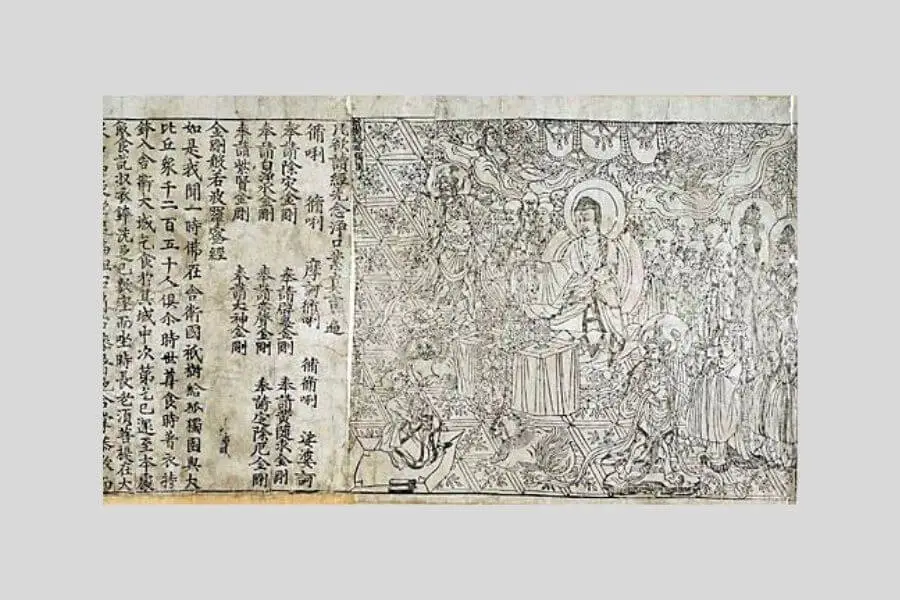
In 1907, Aurel Stein from Hungary chanced upon a sealed room called ‘Cave of a Thousand Buddhas’ containing around 50,000 manuscripts in different languages, among which the ‘Diamond Sutra,’ the oldest printed manuscript, was found.
Moreover, a 2nd century AD Buddhist diagram was found illustrating a ‘cosmic mountain’ known as Mount Meru, which was supposed to be a stairway connecting heaven and earth. This diagram caught a scientist’s attention from Northrop-Grumman, who designs military weapons for the government, and according to him, this Buddhist diagram of Mount Meru was a blueprint for a particle accelerator or a cyclotron, which was used in “development of ‘A’ bomb for the Manhattan Project.”
According to Mongolian myths, certain extraterrestrial beings dwell around Mount Meru because of the ‘energy’ that emanated from it, which probably kept them alive. According to some scholars, Mount Meru was considered to be Mount Kailash, which gave out raw, ‘technological’ energy and not only spiritual energy, which may have had nuclear power.
These theories give us a glimpse into the probable explanation of this enigma of a mountain, which has captured the interest of all people alike. Mount Kailash continues to baffle people with its strange nuances, and will presumably continue to do so. Such is its nature. Belief, after all, lies in the mind of the believer, so what you have to ask yourself is to believe or not to believe, that is the question.
Read Also: The Unexplained Mystery of the Sacred Californian Mountain: Mount Shasta
